When the new Scout plant in South Carolina opens in 2027 it will produce the brand’s two new products on a single shift. Whether there will be enough demand for the Scout Terra and Traveler models to justify adding more shifts is uncertain. That has the new Volkswagen subsidiary looking at other options, possibly including production of vehicles for other VW brands and even some competitors.

Scout Scout CEO Scott Keogh attended the groundbreaking of the company’s South Carolina assembly plant last February.
Buyers looking to purchase the new Scout Terra pickup and Traveler SUV are in for a bit of a wait, the new Volkswagen subsidiary not planning to open its new Blythewood, South Carolina plant until 2027. Even then, CEO Scott Keogh told Headlight.News, it will initially operate on just one shift a day, limiting potential volume.
Whether demand will meet or exceed that output is far from certain. Demand for battery-powered pickups, in particular, has so far fallen well short of expectations, Ford set to idle its own electric vehicle plant in Dearborn, Michigan this month to bring down bulging inventories.
But even if sales of the Terra and Traveler don’t meet Scout’s optimistic expectations doesn’t mean its new, $2 billion plant will remain underutilized. It could be used by other members of the Volkswagen family and even serve as a contract manufacturing facility for other EV manufacturers, according to Joern Petri, a Volkswagen Group strategy who is overseeing the launch of the South Carolina plant.
Taking a different approach
“We set up the factory in a way that contract manufacturing is possible for other VW brands, or whoever is interested,” said Petri, during one in a series of presentations following the debut of the Scout Terra and Traveler models late last month.
For the moment, there are no specific plans to produce anything but Scout vehicles in Blythewood, several company officials told Headlight.News.
The facility – and the two new Scout products – have been designed “so we will be profitable during the first full calendar year” of production, Keogh said in an interview. A number of steps have been taken to minimize costs, he added, starting with the basic design of the two initial vehicles.
Three phases
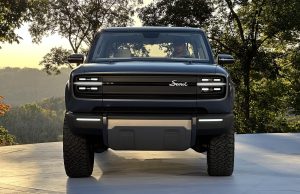
One of the challenges for the future at the Scout plant is the fact that Terra and Traveler use body-on-frame, rather than unibody, platforms.
The Blythewood plant, meanwhile, will be launched in three stages, Petri told Automotive News. That will begin with production of Scout products on a first shift. The eventual goal is to have capacity for around 250,000 vehicles annually, with 4,000 workers in the plant. But, said Petri, “The land that we’ve purchased is ready to double the capacity so we can mirror the factory to the other side.” That’s a similar approach to what Volkswagen did at its currently operating plant in Chattanooga, Tennessee, where it rolls out products such as the ID.4 battery-electric vehicle.
As in Tennessee, Scout is looking to have at least some additional operations collocated on or near its South Carolina plant. Some could be owned by the new brand though outside suppliers could also set up shop there to make it easier to operate on a just-in-time, and even a just-in-sequence schedule. That would allow parts to be shipped over just minutes before they’re needed for assembly – in some cases, in the precise order they will be used.
During his presentation at the Scout debut, Keogh noted that fully half of the plant’s suppliers will be located within 200 miles, with 80% of the parts from Terra and Traveler set to be sourced from North America. That ultimately will include batteries, which should make it possible to offer bigger sales incentives under the local sourcing guidelines in the Inflation Reduction Act.
More Scout News
- Scout Makes its Debut – But Buyers are in for a Wait
- Here’s More About the Scout Plans
- Scout’s Direct-to-Buyer Sales Kick off a Backlash
EV uncertainties
By the time the new Scout plant gets into operation the company expects to have a better feel for what is happening in the EV market. It’s hoping to get a read on its own demand having already launched an advance order bank for Terra and Traveler.
Meanwhile, parent VW is looking for ways to boost demand for the EVs produced by its other brands. Currently, demand for the ID.4 has fallen into a slump, dropping 58% from the second to the third quarter of this year. VW could get a boost from the debut of the long-awaited ID.Buzz microbus and it may launch a U.S. version of the ID.7 sedan next year. Meanwhile, Audi has added a number of all-electric models to its portfolio while the Bentley and Lamborghini marques are set to follow.
By moving production to the U.S., brands like Audi could not only reduce shipping costs but could also be able to offer buyers new incentives under the IRA local sourcing rules.
Synergies – and challenges
“It’s possible to benefit from synergies within the group,” Audi CEO Gernot Dollner told Automotive News last March. But while “a diversified portfolio is conceivable” for the South Carolina plant, he did not commit to signing on for production there.
But diversifying production at Blythewood would have some serious challenges, a senior German executive with the Volkswagen Group told Headlight.News. He pointed out that both Terra and Traveler are based on a body-on-frame design, rather than the unibody construction used by the rest of the VW Group’s products.
It might be possible to develop additional models using that design, he added, but that doesn’t seem likely. One alternative would be to use a completely different manufacturing system should Scout decide to go ahead with a second, “mirror” operation in South Carolina.
Magna-Steyr
Scout is being positioned as an independent entity, rather than just another Volkswagen brand, something that will allow it to do things like sell vehicles online or at company-owned stores.
It could also free it up to make other moves, such as allocating space on a contract basis to other automakers. It wouldn’t be the first to do so. Canadian mega-supplier Magna operates such a facility in Graz, Austria that has served dozens of different carmakers, such as Porsche, BMW, Jaguar and Toyota. The now bankrupt Fisker also used the Magna-Steyr plant and had been planning to utilize another contract plant in the U.S. for future models.


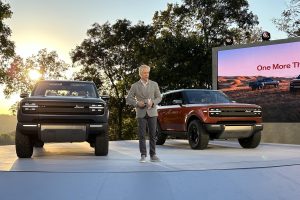
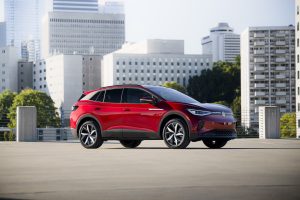
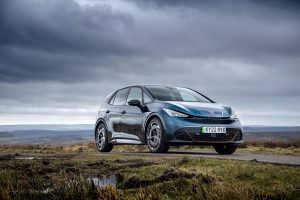
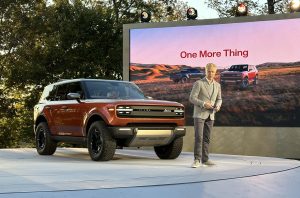
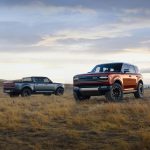
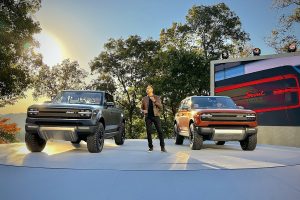
0 Comments